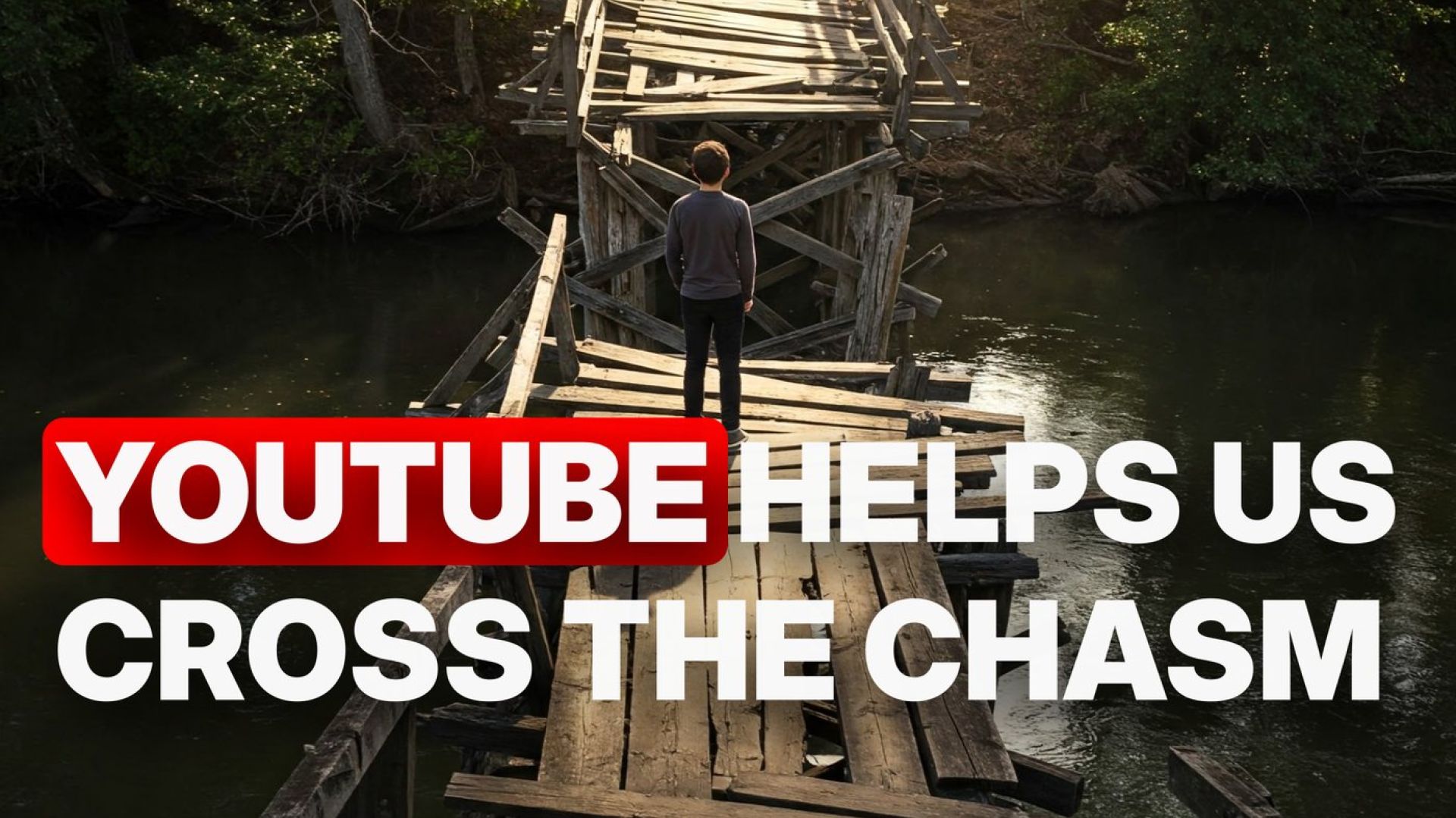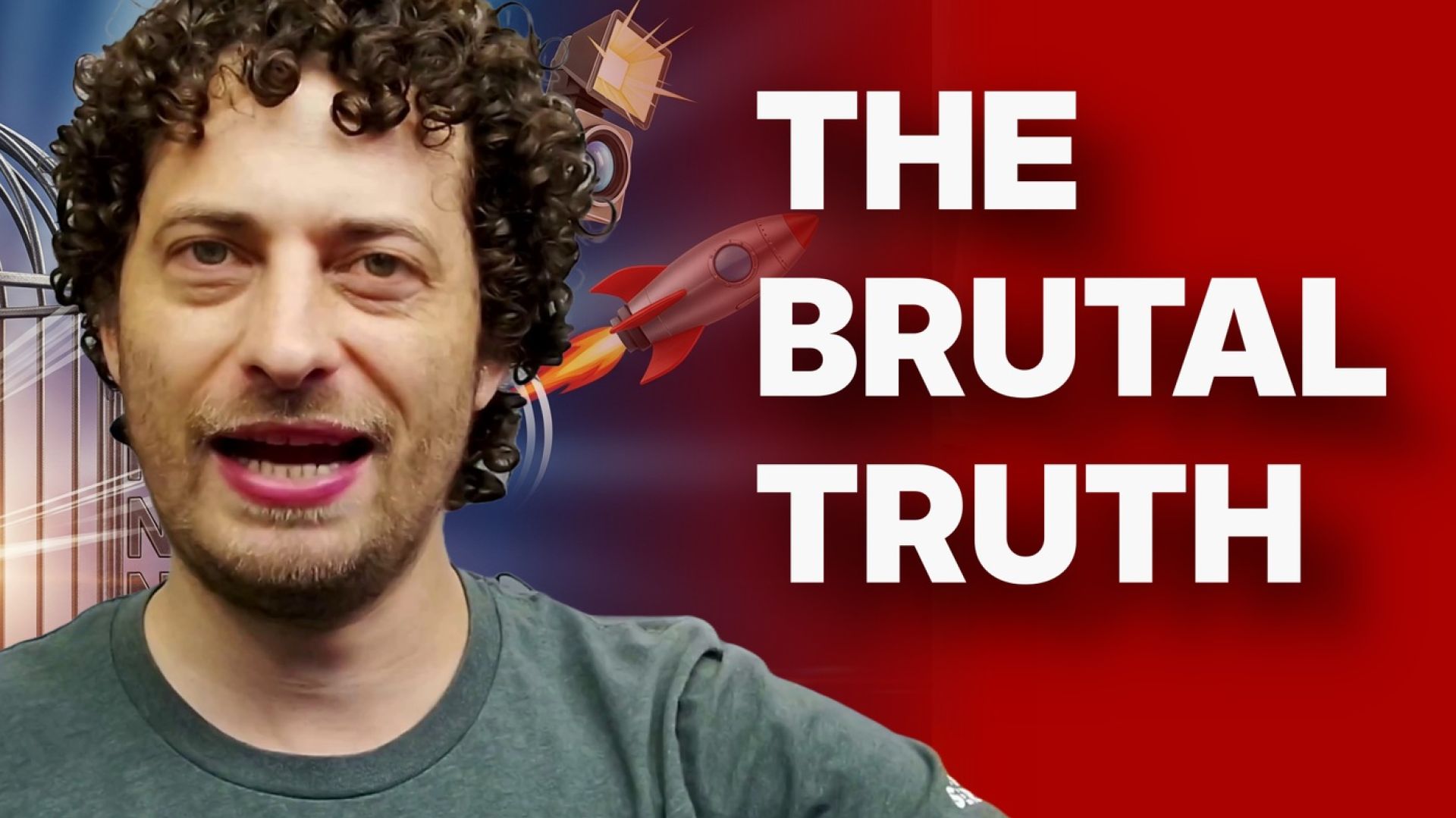
Unexpected Google Traffic Trick for YouTubers (Use Your Script!)
The idea I'll explore in this post with you has generated more Google traffic to my website than any other content I've published in the last 11 years, to my surprise. I've written over 600 articles and produced over 100 podcast episodes.

I'm focusing on getting monetized as a YouTuber, bringing my history of blogging since 2014, and book writing (my freelancing book was published in 2017, and my small business entrepreneurship book in 2019; I'm currently working on my third book). I also started podcasting in 2020, with over 100 episodes produced. This year, 2025, I decided to get serious about YouTube.
The Power of Blogging Your YouTube Scripts
If you're scripting or outlining your YouTube videos, you should seriously consider blogging your scripts. The work is already done! All you have to do is publish it.
Go to your website, create a new post, insert your script, tweak it as needed to ensure it reads well, add your links, and then publish it as a blog post. This is low-hanging fruit; you're already doing the work, so why not take that extra step?
This way, you're getting YouTube traffic from your videos and Google traffic from search engines to your website. You're killing two birds with one stone. If you do this right, you can even drive more views to your videos by directing traffic from Google to the video itself. Another benefit is that you might be able to rank your blog post higher on Google than your video on YouTube, giving you an additional advantage.
A Surprising Example of Success
I'll share an example of my success after generating blog posts from YouTube videos. The post I mentioned at the beginning of this video is the most Googled blog post on my website, and it's getting all kinds of traffic. It's bizarre because the phrase is so common and dominant on YouTube that there's probably no way I could rank for it there. However, for some reason, my blog post has ranked high on Google. Part of this has to do with my history of blogging and having domain authority, which plays a factor.
I think this is a huge opportunity for YouTubers who are open and willing, especially those who are already writing scripts. If you're a writer, it's not a big hurdle to jump into blogging if you haven't already. Take your script, publish it as a blog post, embed the video at the top, and you're done! Suddenly, you've created a new way to promote your videos (this blog post is an example of this).
I've consistently used this approach with my podcast episodes. Every episode I publish gets a corresponding post on my website, which includes the video, audio, notes, details, links, and transcripts. I drive traffic to my podcast episodes on YouTube through this method because I optimize these pages for search engines. These search engines index my pages, I rank for different keywords, people visit those pages, and they watch the video, generating watch hours. Some of my watch hours come from my website and from work I've done in the past, so I don't have to do much to maintain it. I'm getting active views and watch hours that will continue to compound over time as I add more podcast episodes.
Tips for Non-Scripted Videos
If you're not scripting or outlining your videos and you're just speaking improvisationally, take the transcript and feed it to an AI tool like ChatGPT. Have it draft a blog post for you. This eliminates the step of having to write the blog post yourself.
When you feed the transcript to ChatGPT or Google Gemini and have it draft up the blog post based on what you said, you can then edit and add to it while adding internal links to other content. This prompt will help speed up the process of drafting it for you.
Whatever process you need to take, just do it. Start taking your content and publishing it in both written and video form, and you'll be surprised at the results you can achieve.AGI Prompt: Take the transcript and add punctuation and grammar fixes. Remove the overly redundant parts and any fluff that does not provide any value to the reader.
My Results with Google Search Console
Let's dive deeper into my success example. If you're not familiar with Google Search Console, it's a vital free tool for anyone with a website. Set it up if you don't have it; Google will provide details about who is clicking your website and what keywords they're using. If you need help, I've got a program to guide you through the process.
In the Google Search Console, I've pulled up my website, jasonscottmontoya.com, and narrowed the data to the last 28 days.
- Total clicks from Google: Over 1,160
- Total impressions: Over 130,000
The top-performing page on my website is "How do I increase YouTube watch time to get monetized?" This single page has generated 181 clicks in the last 28 days, which is incredible. Other popular pages include a YouTube video I did with a company called "The End Hot Sauce Challenge," an article on constructive developmental theory, a post about leadership mind traps (a book by Jennifer Garvey Berger), and "Ways to respond to an offer for help," which gets 54 clicks from Google in the last 28 days.
"How do I increase YouTube watch hours?" is the number one most clicked blog post. This post, with my YouTube video embedded at the top, is followed by the written blog post. I wrote this out, and then I used it as my script to guide me through recording the video. The content is solid, and it ranks on Google, driving traffic. I published this on January 14th, and in the subsequent three months, I received 400 visitors from Google to this post, which is pretty incredible.
Blogging is a different channel and a different medium. People who Google something are probably more likely to read it, while people who search on YouTube are more likely to watch. You'll get different audiences, but this creates an opportunity to cross-pollinate or communicate with them in different ways across separate media.
There have been 41,000 searches for different phrases where my site has appeared, resulting in 400 clicks for this blog post. That's a lot of clicks and a lot of opportunity. My average position for these searches was low initially, then fluctuated, and then steadily plateaued around February 9th, which is when I started getting a significant number of clicks.
For phrases like "how to increase watch hours on YouTube" or "how to increase YouTube watch hours," my position on Google is between 6.4 and 7.4. This means I'm high up on page one, which is crucial. There are over a thousand different phrases people have searched to find my post, with varying click counts for each.
I didn't expect this. I created this video for YouTube and simply published it as a blog post because that's my usual practice, and it's working out great.
Enhancing Your Website and Monetization
If you go to my blog, you'll notice I've also changed my image preview size to match my YouTube thumbnail size. Now, when I create a thumbnail, I can use it for both YouTube and my website. My website thumbnails used to be very basic, just pictures with the title. With YouTube, I learned the importance of thumbnails, and I thought, why not apply that to my website? Just like on YouTube, I have a grid of posts, and I want to compel people to click and watch. Almost all of these are YouTube videos and blog posts, which is by design.
My goal is to get monetized as a YouTuber. I've realized it's the lowest-hanging fruit for a content creator to get monetized. It's faster than trying to monetize a podcast in other ways or monetizing a blog. So, I'm aligning all my content creation efforts towards YouTube. If I'm going to blog, I'm going to create a video script, and then I'll create the video itself. I'll do both. This provides a mechanism to monetize my blogging. Once I'm monetized, I can explore other ways to expand, including sponsorships. I'm excited to have secured my first video sponsorship for the year.
The Key Takeaway
The thing I want to emphasize is this: when you create a script or an outline for your YouTube video, or if you've already recorded your video and have a transcript, take that and create a blog post.
For example, a recent post I did was "The Type of Person a Tyrant Fears." I wrote this out, included quotes, and used an outline to guide my video. Then, I refined the video and pulled it into my post. For a YouTube challenge video I did, I didn't script it; I just had an outline. So, I took the transcript, put it in the blog post, and edited it, adding links to other blog posts and videos (like I've done here).
These are a few tips on how to cross-pollinate your content creation. If you don't have a website or haven't been blogging or podcasting, this idea might not be for you. But if you have an existing platform and you're looking to take your YouTube and blogging to the next level, this is a great way to do it.


